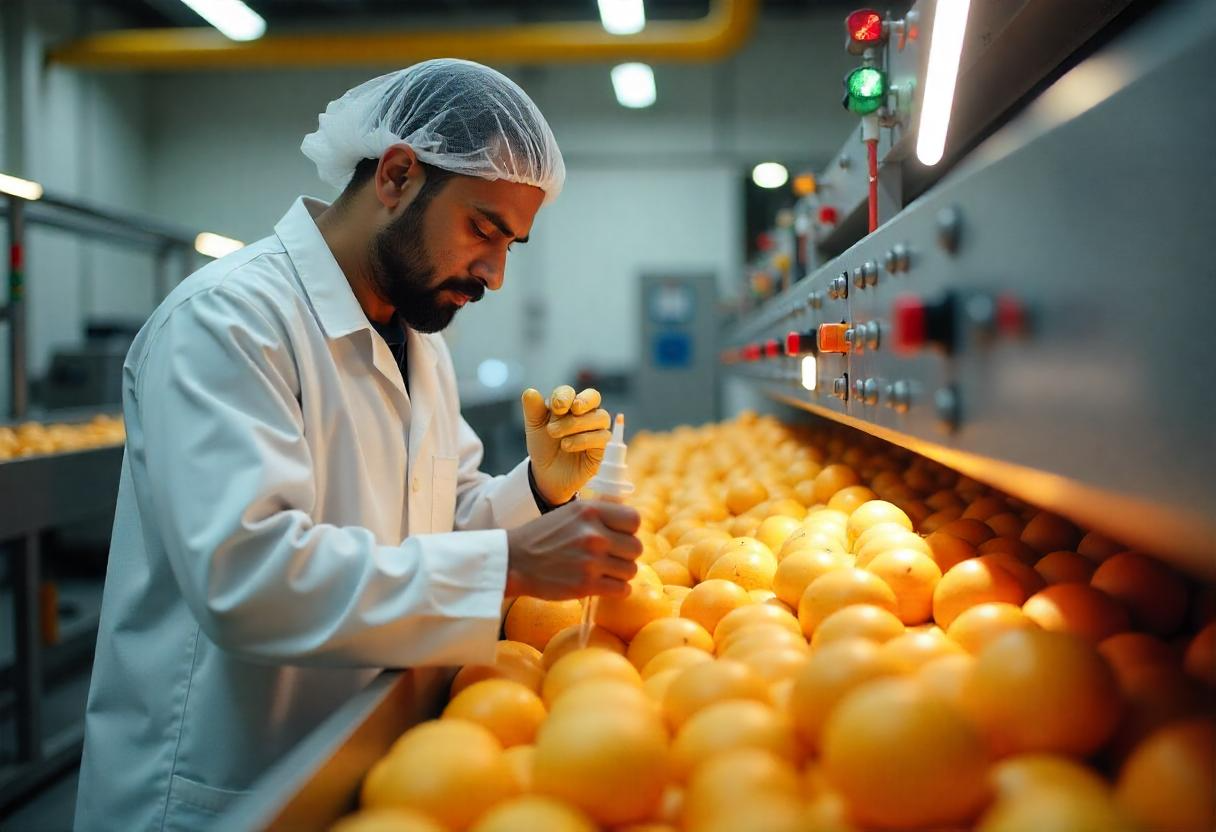In food processing, maintaining strict hygiene standards is essential to ensuring consumer safety and regulatory compliance. One often-overlooked factor in contamination control is the proper selection and use of lubricants. Without the right cross-contamination prevention strategies, lubricants can become a hidden source of foodborne risks. Implementing food-safe lubricants and adhering to lubricant application best practices are key to maintaining the highest hygiene standards.
The Role of Lubrication in Cross-Contamination Prevention
Lubricants are an essential part of food processing machinery, reducing friction, preventing wear, and ensuring smooth operation. However, if not managed correctly, they can pose contamination risks. Cross-contamination prevention involves using the right food safety lubricants, following strict handling protocols, and ensuring proper application to prevent accidental food contamination.
The most effective way to ensure food safety is by using NSF H1 grease and industrial hygiene oils, which are designed specifically for incidental food contact and meet strict regulatory standards.
Types of Contamination in Food Processing
Before discussing lubricant application best practices, it’s important to understand the different types of contamination that can occur in food processing environments:
1. Chemical Contamination
This occurs when harmful chemicals, such as industrial lubricants, cleaning agents, or machine residues, come into contact with food. Using food safety lubricants eliminates the risk of toxic substances contaminating food products.
2. Physical Contamination
Lubricant leaks, spills, or improper application can introduce unwanted particles into food products. Properly applied NSF H1 grease ensures that lubrication stays where it’s needed and does not enter food areas.
3. Microbial Contamination
Poor lubrication practices can lead to bacterial growth in machinery. Industrial hygiene oils help keep equipment running efficiently while reducing the risk of microbial contamination.
Best Practices for Using Food-Grade Lubricants
To effectively support cross-contamination prevention, food manufacturers must implement lubricant application best practices and choose the right food safety lubricants for their machinery.
1. Use NSF H1-Certified Lubricants
The NSF H1 grease classification indicates that a lubricant is safe for incidental food contact. Using industrial hygiene oils and greases with NSF H1 certification ensures compliance with food safety regulations.
2. Apply Lubricants Correctly to Prevent Leaks
Applying too much lubricant can lead to excess product dripping onto food surfaces. Conversely, insufficient lubrication can cause machinery to overheat or malfunction. Following lubricant application best practices ensures precise application to prevent contamination.
3. Separate Lubrication Areas to Avoid Cross-Contamination
Food processing facilities should store food safety lubricants separately from non-food-grade lubricants. Dedicated lubrication stations and clearly labelled storage areas help prevent accidental mix-ups.
4. Train Employees on Proper Lubrication Practices
A well-trained workforce is essential for cross-contamination prevention. Employees should be educated on:
- The difference between food safety lubricants and standard industrial lubricants
- Lubricant application best practices to prevent spills and leaks
- Proper handling, storage, and disposal of lubricants
5. Conduct Regular Equipment Inspections
Routine inspections help identify potential risks before they become major contamination issues. Checking for leaks, excessive lubricant buildup, and proper lubricant performance ensures industrial hygiene oils remain effective.
6. Implement a Lubrication Management Plan
A structured lubrication program helps food manufacturers maintain consistency and control. A good plan should include:
- A list of approved NSF H1 grease and lubricants
- Scheduled maintenance and lubrication intervals
- Record-keeping for compliance audits
7. Ensure Compatibility with Cleaning and Sanitation Procedures
Food safety lubricants should be resistant to washdowns and cleaning chemicals. Some industrial hygiene oils are designed to withstand high-pressure cleaning without losing their effectiveness.
The Importance of NSF H1 Certification in Food Safety
Not all lubricants are created equal. The NSF H1 grease certification is essential for food production environments because it guarantees that a lubricant is safe for incidental food contact.
- NSF H1 Lubricants: Used in food-processing areas where incidental food contact may occur.
- NSF H2 Lubricants: Used in non-food areas where there is no risk of contact.
- NSF H3 Lubricants: Typically edible oils used for direct food contact applications.
By using only NSF H1 grease in food processing equipment, manufacturers significantly reduce the risk of contamination.
Benefits of Proper Lubrication in Food Processing
When food manufacturers follow lubricant application best practices, they gain multiple benefits, including:
✅ Enhanced Food Safety – Using food safety lubricants prevents chemical contamination and ensures compliance with industry regulations.
✅ Improved Equipment Performance – Industrial hygiene oils reduce wear and extend the life of machinery, improving operational efficiency.
✅ Reduced Downtime – Proper lubrication minimises equipment failure, preventing costly downtime in food production.
✅ Regulatory Compliance – Using NSF H1 grease ensures that food processing facilities meet safety standards, avoiding fines and legal issues.
✅ Better Consumer Trust – Preventing cross-contamination improves product quality, reinforcing consumer confidence in food safety.
Final Thoughts
Cross-contamination prevention in food processing requires a comprehensive approach that includes selecting the right food safety lubricants, following lubricant application best practices, and ensuring proper training and maintenance.
By using NSF H1 grease and industrial hygiene oils, food manufacturers can protect their products, extend equipment life, and maintain the highest hygiene standards. Investing in proper lubrication management is not just about compliance—it’s about ensuring food safety and delivering high-quality products to consumers.
